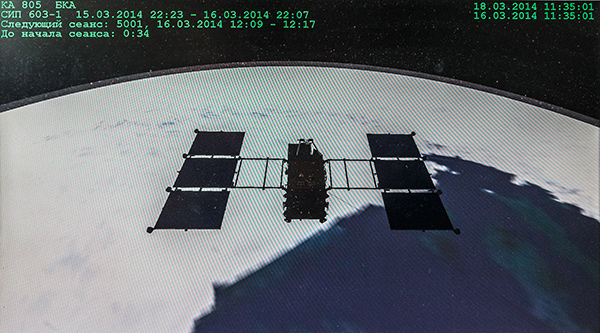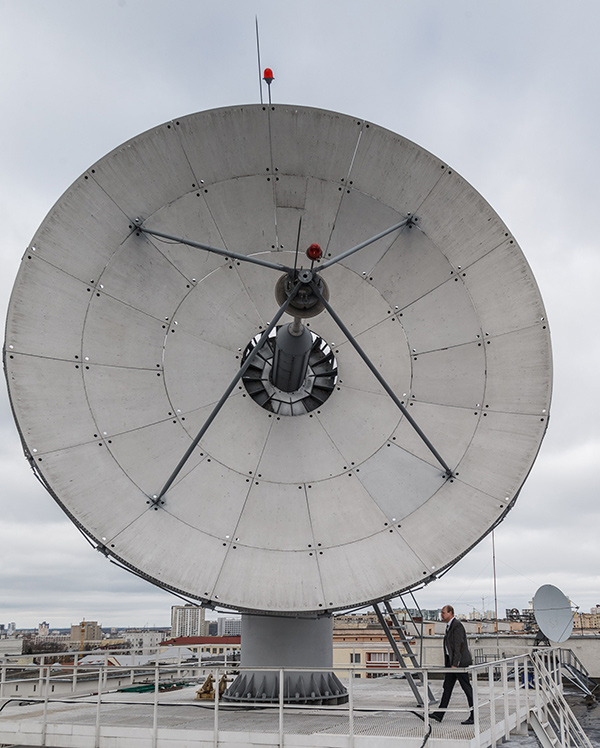
The First Deputy Chairman of the Presidium of the NAS of Belarus, Sergey Chizhik, announced the news, explaining, “The new agency brings together a research-and-production enterprise of remote Earth sensing, Geo-information Systems, the United Institute of Informatics Problems (UIIP) and other organisations. It will closely co-operate with the Ministry of Communications and Information, and many other departments, within our country and abroad. The main objective is to raise the efficiency of space research in Belarus, and the practical efficiency of such work. Most of our country-partners with whom we co-operate in space research have such agencies.”
The new state structure aims to support the creation of a new generation Belarusian satellite for remote Earth sensing, as well as the expansion of Belarus-Russia space grouping, and co-operation on the Union State scientific and technical programmes. Mr. Chizhik notes that Union projects are a strong platform upon which the national Belarusian space programme is developing.
Every year, six space-related programmes are funded by the Union State, with the participation of the NAS of Belarus. The current Monitoring-SG programme is being carried out under the aegis of the United Institute of Informatics Problems (UIIP), in close co-operation with Russian partners, covering the period from 2013 to 2017. It aims to develop space and surface means of remote Earth sensing, for Russia and Belarus, raising the number of space vehicles and expanding their possibilities. In all, 29 enterprises and organisations from Belarus are involved, explains co-ordinator Sergey Korenyako (for the Belarusian side). He is satisfied with current progress and goals for the future, which include outline documents for orbital equipment and surface systems. The launch of a Russian microsatellite platform into orbit is now being planned.
These are only fragments of our Belarusian-Russian space partnership, discussed by presidents Alexander Lukashenko and Vladimir Putin at the recent session of the Supreme State Council of the Union State. Meanwhile, a joint working group (of the NAS of Belarus and the state corporation Roscosmos) discussed results of Union programmes, and concepts for new projects.

The Chief of Staff at the NAS of Belarus, Piotr Vityaz, tells us, “We’ve planned ten directions of co-operation within Union programmes: at various stages of preparation. The Skif-Nedra programme, for example, has been launched, while Technologiya has been accepted by our Belarusian and Russian governments, being ready now for submission to the Union State Standing Committee. At the meeting in Moscow, we discussed new directions of co-operation with the Head of Roscosmos, Igor Komarov. We hope that he’ll come to Minsk to learn more about Belarusian scientific organisations and manufacturing enterprises in the space sphere.”
Belarus is developing other directions of space research, with a Belarusian mini-satellite due to be launched into orbit in 2015. It is currently being created at Belarusian State University, in close co-operation with Southwest State University, Moscow State University and other establishments of higher education of Russia. Details are being decided, with components purchased and installed. Vladimir Saechnikov, Head of the Chair for Radio-physics and Computer Technologies at BSU, tells us that students are helping work on the mini-satellite: small but daring, it will be able to deliver considerable volumes of data, for use by various branches of the economy.
Scientists at the National Academy of Sciences of Belarus are close to the design of a full-scale satellite for remote Earth sensing, with double the capacity of the 2012 model. Working closely with Roscosmos enterprises and organisations, as soon as the Government of Belarus adopts its new national space research programme, creation will begin. Mr. Vityaz notes that this will take about three years, being launched into orbit via a Russian rocket, as previously. Efficiency considerably increases when satellites operate within a cluster.
Belarusian-Russian co-operation in the sphere of space exploration has many aspects, including joint Union scientific and technical programmes of recent years. The programme of integrated standardisation of space hardware (Standardisation SG) is now complete, its results allowing Belarusian and Russian developers of space hardware to ‘speak’ one technical language, with a European accent, since new standards are harmonised with those accepted in the European Union.
The Deputy Director of the Geo-information Systems enterprise, Boris Chernukha, explains, “In total, we’ve developed 69 standards, officially adopted in Belarus and Russia; of these, 29 were prepared by Belarusian experts. These documents govern the full life cycle of space hardware, from operation to recycling. Most of these standards are already applied at Belarusian and Russian enterprises working on significant projects, such as the Belarusian national system of satellite communication and the joint programme ExoMars, being carried out by Roscosmos and the European Space Agency.”
To ensure dynamic progress, we must optimise the speedy adoption of Union scientific and technical programmes, notes Mr. Vityaz, to bring the timeframe of adoption down from 18-24 months to just 6 months. The heads of the Standing Committee of the Union State and the NAS of Belarus have been debating how best to achieve this aim. The main commissions of Parliamentary Assembly of the Union of Belarus and Russia will play an important role in moving forward the acceptance of scientific and technical programmes, helping accelerate Belarus-Russia co-operation in the space field.
The Belarusian remote Earth sensing satellite transmits information back to the surface flight operation centre for the benefit of ten ministries and departments. These data are assessed at approximately $25 million annually, with exported data bringing revenue of $5.5 million. Thus, according to scientists, the expenditures spent for the creation and launch of the satellite — worth $16 million — have already paid for themselves.
By Vladimir Yakovlev











